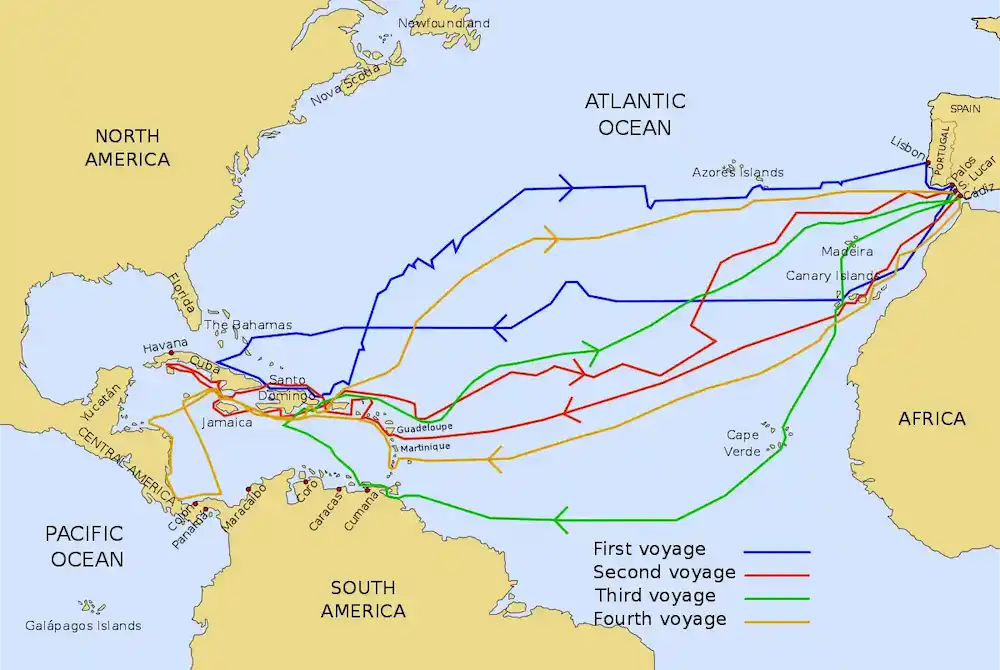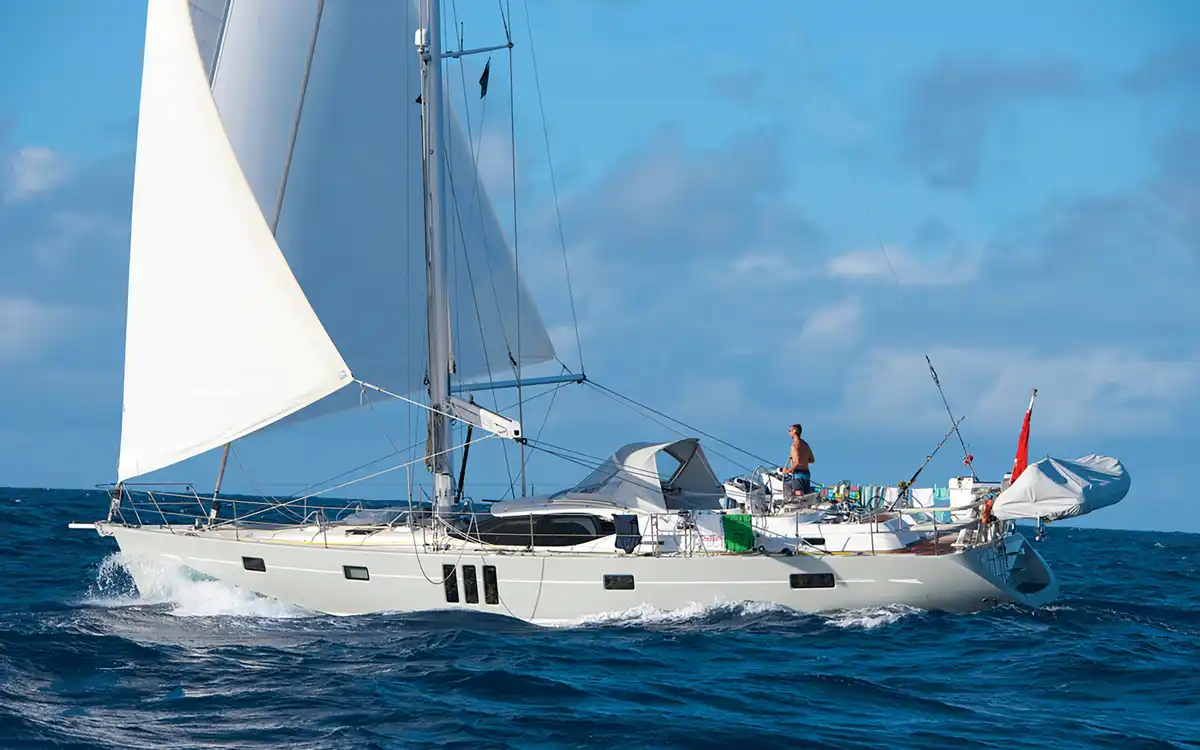You’ve probably dreamed of crossing the Atlantic on a sailboat, and now you might be at a point where you’re starting to plan. It is undeniably a sailing trip of epic proportions, so you need to be well prepared.
It usually takes months or even years of planning and preparation. But one of the many questions you may be asking yourself is: how long does it take to sail across the Atlantic?
An Atlantic crossing on a sailboat takes an average of 20 to 25 days, but it can be completed in two weeks: if you are lucky, take shortcuts, and have a fast sailboat. If you don’t have enough wind for a week or more, it can take up to a month. It is important to know the shortcuts, maximize speed and have the experience to cross the Atlantic.
In this article, you will learn everything you need to know about sailing trips across the Atlantic. You will learn about the level of difficulty, how to plan the trip, when is the best time to sail, and what size of a boat is suitable for the crossing.
How Difficult Is It To Cross The Atlantic?
You are probably wondering whether it is difficult to sail across the Atlantic or not. The truth is that sailing across the Atlantic is not the same for everyone, so it is difficult to say if it will be difficult for you.
For experienced sailors, it can be much easier to sail across the Atlantic even if they have done it before because they have more experience.
On the other hand, it can be quite difficult for a beginner, who may need to gain some experience sailing before even thinking about crossing the Atlantic.
You should also have a sturdy boat with durable and easy-to-use sails, a GPS, and all accessories such as a watermaker. Most importantly, have an experienced crew and make sure everyone takes care of themselves and does their part in the crossing.
The Best Months To Sail Across The Atlantic
Although crossing the Atlantic can take about three weeks, it would only be advisable if you plan to spend at least a month on your sailboat. In most cases, you will be exposed to changeable weather throughout the period, so it is crucial to know when you should sail.
You should also pay attention to the trade winds. Be aware that the trade winds can change direction depending on the time of year, so they can either hinder your trip or help it go smoothly.
However, the best time to cross the Atlantic is between November and February. You may be wondering why it makes sense to sail during the coldest months of the year. The Atlantic is warmer during this time. With higher water temperatures in the winter, you won’t be shivering.
Another reason you should sail between November and February is that there is less chance of hurricanes. This makes sailing during this time much safer than at other times of the year. Sailing during hurricane season can be very dangerous and is not the right way to test your sailing skills. I have been through Bermuda hurricanes in the Atlantic Ocean and it was not a good experience with 30 feet waves and constant strong winds.
The trade winds will most likely be in your favor if you sail between November and February. The easterly and trade winds of the mid-Atlantic will make sailing easier during this time.
SEE ALSO: Best Luxury Gifts for Boaters
How To Sail Across The Atlantic
It would not be a good idea to start planning your sailing trip after reading this article unless you are an experienced sailor. The truth is that you may not even know that there are routes you need to take. There are two main routes: east to west and west to east.
These routes may seem huge, but they are the most permissive and have been used by sailors since the time of Christopher Columbus.
The Northern Passage (From West To East)
Like any other route, this one is governed by the trade winds, and you want the trade winds to work in your favor. The first thing you need to do is get to your departure port. If sailing from America to Europe, you will need to get to either New York or Bermuda, which is usually the starting point for sailors sailing from America to Europe.
The idea of starting from Bermuda is based on the fact that it has the best winds. You can sail directly from New York to England, which is the quickest route. Or choose the more extended trip south to the Caribbean. After that, you need to sail to the Portuguese Azores, from where you can sail to the Portuguese coast and then on to your final destination.
The distance for the New York to England route is around 2,880 nautical miles (3,310 mi).
The South Passage (East to West)
As with the eastbound trip, you must first reach your port of departure. The best way to make this trip is to sail southeast. So the best departure port should be Southern Spain or the Canary Islands off the coast of Western Sahara. Near Dakar, Senegal, you should set sail for Cape Verde before sailing to the Caribbean.

A typical route between Cadiz and San Salvador Island covers a total distance of 3,884 nautical miles (7,193 km). This route is also called the route of discovery in honor of the 1492 First voyage of Christopher Columbus. (illustrated by the blue lines on the above map)
Why Does A Crossing Take So Long?
Apart from the fact that the total distance of this trip can be as much as 4,000 nautical miles (if taking the East to West route), a sailing ship never travels in a straight line. The crossing is usually curved, so it covers more distance, which can take up to three weeks in good weather and another week if the weather and wind are against you.
And since you never know what the sea and weather will bring, it only makes sense to put the distance in nautical miles and not in terms of weather. However, several factors come into play when crossing the Atlantic in a sailboat.
For example, the type of boat used affects the speed of travel. In general, sailboats can reach 10 knots. In addition to speed, your location can also be an essential factor. For example, if you are traveling from California, you may have to travel a greater distance than.
Using Atlantic Trade Winds
Trade winds generally come from the southeast if you are sailing in the Southern Hemisphere and can drive you toward the equator. On the other hand, they can come from the northeast and push you along the equator if you are sailing in the Northern Hemisphere.
It should be noted that sailing in the Atlantic is highly dependent on how you take advantage of the reliable trade winds. These trade winds are very predictable, making them very useful for your voyage. In the middle of the Atlantic basin is a vast area of high air pressure. This area is known as the Azores High and extends all the way to Bermuda.
The trade winds are predictable because they blow in the same direction due to the Earth’s rotation. Fortunately, the currents also move in the same direction as the winds, which makes for comfortable sailing.
What You Need for an Atlantic Crossing
Let’s face it, crossing the Atlantic on a sailboat is not about pointing the boat east or west and setting sail. You need to be a good sailor, gain experience and prepare for the trip. The most important thing is gathering information, planning, and getting a sufficient level of sailing experience.
Here are some of the things you need:
- Create a time scale for the trip
- Choose the most suitable route
- Have a budget
- Choose the crew. Make sure the crew is qualified and experienced.
If you plan to sail alone, you must keep in mind that the risks are higher because you are alone on the sea and must always keep a watchful eye. You must also be able to help yourself and save yourself. However, we believe that you should not make such a trip alone. Find a crew who will support you during this trip.
The Right Clothes for the Trip
If you want to cross the Atlantic Ocean, you should always travel light without compromising your safety. This trip will take you through a wide range of temperatures and weather conditions, so pack accordingly.
Here are some of the things you should have for this trip.
- Four sets of dry clothing for all weather conditions.
- Warm waterproof boots and sneakers
What Is The Best Sailboat For An Atlantic Crossing?
Your sailboat should not be smaller than six feet because it could be too dangerous. For this reason, the best sailboat for an Atlantic crossing should be at least 30 feet long to withstand stormy weather, strong waves, and winds.
Important factors to consider:
- size
- construction
- condition and build quality
- speed
- stability
- durability
- easy to steer
- number of crew members required
When choosing a boat, opt for a sailboat with a fixed keel, as this works much better than sailboats with hanging rudders. Instead of choosing a sailboat with more than one hull, you can opt for a monohull. The thought behind this is that a sailboat with multiple hulls can be very difficult to control in bad weather.
Since you want to focus more on your route, you should avoid anything that might distract you, so a monohull sailboat might be the best choice.
Takeaway
That’s all: Sailing across the Atlantic is a great challenge that can last about three weeks or more. The most important thing is to prepare and plan the route. Choose the right crew, prepare for the crossing and learn to use the winds to your advantage.
You also need to ensure the timing is good and that the sailboat is the right size and build and well equipped for the crossing.
Read More:
- How To Sail From California To Hawaii?
- How to Sail Against The Wind?
- 10 Best Liveaboard Marinas In The US
- 10 Best Liveaboard Marinas in North Carolina
Featured Image Credit: Tim Bishop
